 Put kids and marbles together and you automatically have a great time planned. Add a few lessons about Push and Pull, and you have an experiment in physics that combines fine motor skills, creative design, an understanding of force, and lots of marbles that went home with happy families. We held this program as a our second Workshop in January of 2017.
Put kids and marbles together and you automatically have a great time planned. Add a few lessons about Push and Pull, and you have an experiment in physics that combines fine motor skills, creative design, an understanding of force, and lots of marbles that went home with happy families. We held this program as a our second Workshop in January of 2017.
The skinny: This was a super fun program, although it was one of our shortest ones yet. I talked with the kids for about 15 minutes giving them some background in forces, balance, and push and pull physics. Then, I turned the kids loose on building their own marble runs. It only took the kids 15 minutes to design their own, which was much less time than I expected. In the future, I will try to combine this with a second activity to stretch it out, because I do like these workshops to go for 45-60 minutes. It was budget friendly, with supplies left over for me to do this again during our summer reading program.
Inspiration: I found this idea on Buggy and Buddy Blog. Her photos were so engaging that I thought, “We can try that!”
Cost: About $0.25 per child. I ordered a large box of Wikki Stix from Amazon for $23 (this box should serve 156 children, so we will certainly be doing this project again to go through it all!). I also ordered a large bag of Soak-Proof Foam Dinner plates ($4) so that the kids would have something sturdy to build on, and these plates had high edges. I also purchased three packs of 50 marbles for $1 at the Dollar Tree. We also used tape and scraps of construction paper that we had on hand. Each child received one plate, one marble, three of the Wikki Stix, and free access to the paper, markers, scissors, and tape.
Materials:
Foam Plates
Scissors
Scrap construction paper
Wikki Stix
Tape
Markers
Marbles
STEM at work: Building a marble run on a paper plate, which is meant to be held and moved back and forth to make the marble go on the desired path gives children an opportunity to experiment with physics principals, Newton’s First Law, the force of gravity, and creative engineering through original designs. To keep it focused, I decided to talk about the forces of Push and Pull.
Set up: To keep the kids on track (and not using more supplies than they needed) I took the time to prepare individual bags and place settings for each child. That way we did not have to fight about which color or Wikki Stix each child wanted. In each bag I placed 3 of the Wikki Stix, all in different colors and 1 marble. I set up the tables so that each table had five plates with the prepared bags, and I also pre-cut a piece of blue painter’s tape about 8 inches long and stuck it to the table. That way, each child has the materials they needed. I also pre-cut about 200 strips of paper approximately 1″ by 4″ to use for building arches and guards for their marbles. The paper strips were placed on the tables in pie tins so that the kids could grab them and use them at will.

Resources: I used the book, Give it a Push! Give it a Pull! A Look at Forces by Jennifer Boothroyd.
How it went: I brought all the kids and families into our Storytime/Programming Room. The kids sat on our magic carpet and I started off by placing a toy bus on the table. I asked the kids what the bus was doing. (Correct answer: nothing!) I then gave the bus a push. Now what is it doing? (Moving!) Why? One girl answered, “Because of the wheels!”) Really? I turned the bus on its side and gave it another push which sent it a few feet away. We got to the part that it was moving because I pushed it. I then pulled the bus over to me, and the kids go that it moved because I pulled it. Push=move something away from the force. Pull=moves something closer to the force.
I then took out our book, Give it a Push! Give it a Pull! A Look at Forces by  Jennifer Boothroyd. I try to use a book at least for a few moments every Workshop because it shows that literacy and STEM go together in fostering curiosity! I did not read every page of this book. Instead, I prepared some post-it notes and I placed them on pages where I wanted to ask the kids questions. This helped keep the book engaging, and kids and me asking questions about what we were reading.
Jennifer Boothroyd. I try to use a book at least for a few moments every Workshop because it shows that literacy and STEM go together in fostering curiosity! I did not read every page of this book. Instead, I prepared some post-it notes and I placed them on pages where I wanted to ask the kids questions. This helped keep the book engaging, and kids and me asking questions about what we were reading.
After finishing the book, I showed the kids the marble run that I had created, and how they would be tilting the plate to push and pull and marble towards them, or away from them, for the marble to go through its maze. I had the kids count and time me to see how long it would take me for my marble to go through the maze that I had created. (Answer: 6 seconds!)
I then had kids volunteer to bring the tables out from the corner of the room and into the center. One little girl was frustrated with her partners who were not lifting the table and she said, “Why is this table not moving?” I could not help it, and I had to answer as I went to give them a hand, “Because we are not applying enough force”. J I have found out that kids love to help me set up and take down the programming room after a program, and this is an important time for me to build positive relationships with them by thanking them for helping.
With the tables in place, the kids were ready to build! Like I said above, it only took them about 15 mintues to finished their maze. Then, the kids raced each other to see who could make their marble go through the maze fastest. I am getting smarter at this, and after the program I asked the kids to give me back and sandwich bag that held their marble and three Wikki Stix. I can re-use the bag, which cuts down on waste and cost! Some kids wanted to keep their bag, though, so their marble did not get lost on the way home, which was fine.
Another STEM Workshop in the books! Stay tuned for our February Workshops: Human Heart Science and Write Your Name in Computer Code!





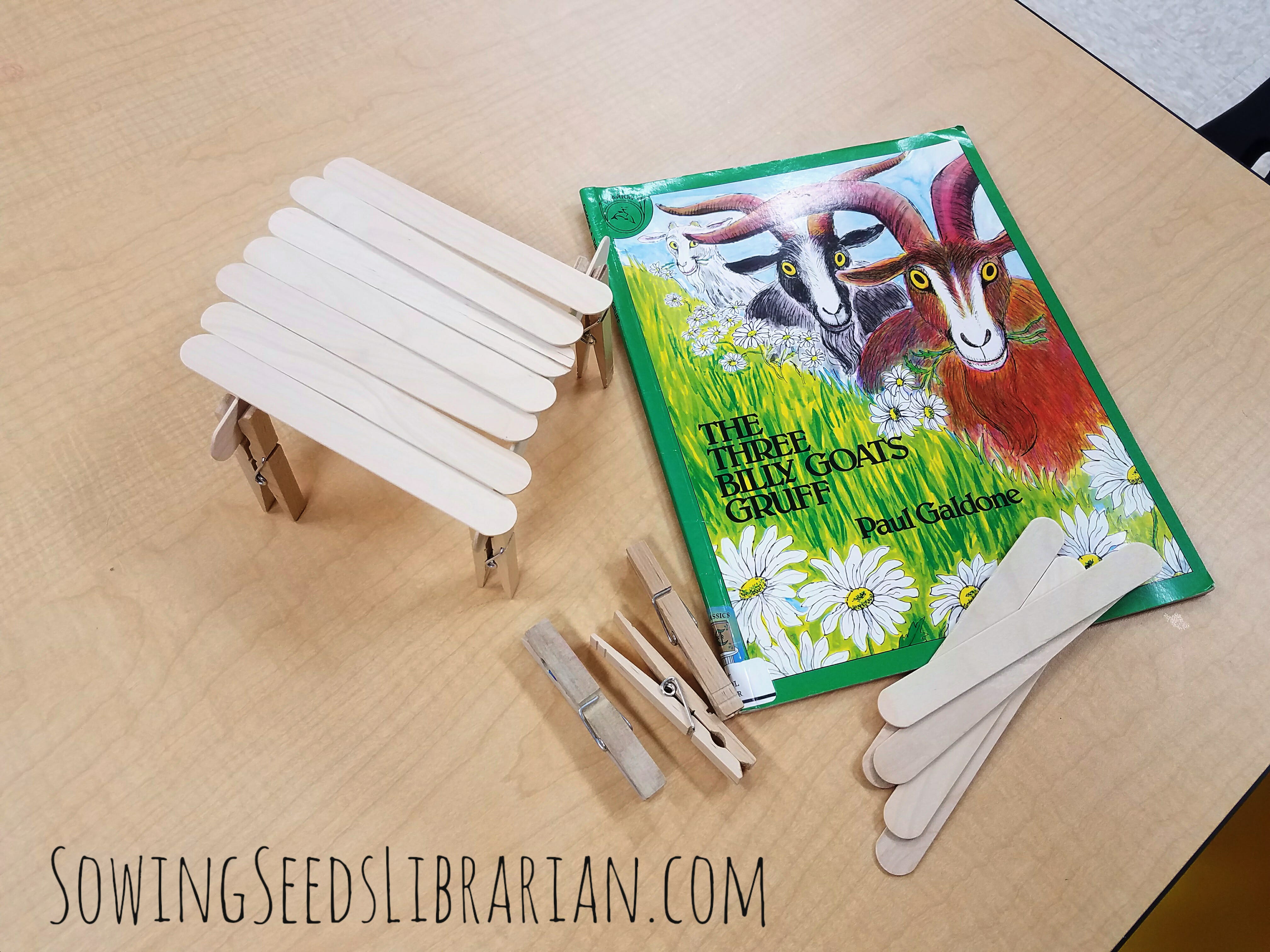
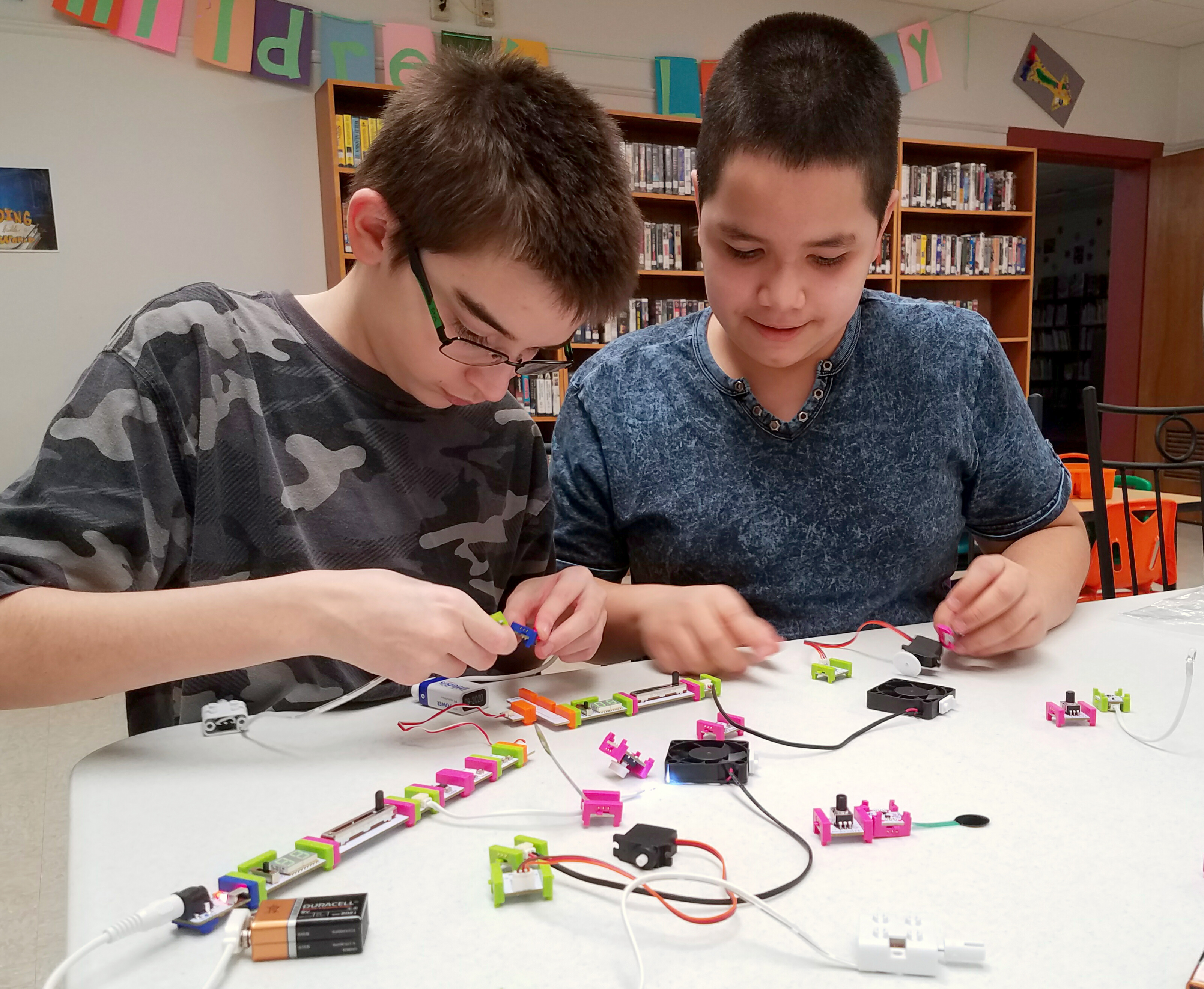

 How it went: We began the program by sitting in a circle and talking about paper airplanes that we had all built in the past. Kids have great stories about planes they have built and the different “flight” patterns their planes exhibited, and it was a great way to build comradery in the group and practice conversation skills. By the way, I had kids in the program as young as two and as old as ten. I then took out the book, Paper Airplanes by Jenny Fretland VanVoorst. Depending on the group you might want to read the whole book, or, especially focus on pages 12-19. For our program, we focused on the physics vocabulary terms” Gravity, Thrust, Lift, and Drag. After reading the book I wrote those four words on the whiteboard and we talked a little bit more about those terms with an example paper airplane.
How it went: We began the program by sitting in a circle and talking about paper airplanes that we had all built in the past. Kids have great stories about planes they have built and the different “flight” patterns their planes exhibited, and it was a great way to build comradery in the group and practice conversation skills. By the way, I had kids in the program as young as two and as old as ten. I then took out the book, Paper Airplanes by Jenny Fretland VanVoorst. Depending on the group you might want to read the whole book, or, especially focus on pages 12-19. For our program, we focused on the physics vocabulary terms” Gravity, Thrust, Lift, and Drag. After reading the book I wrote those four words on the whiteboard and we talked a little bit more about those terms with an example paper airplane. The kids loved seeing their planes fly! We went back and forth between flying and going back to the work tables to tweak designs. In the end, I think we had about 12 rounds of flying the planes before having everyone sit down in a circle again. We talked about our four physics vocabulary words that help explain the forces behind why paper airplanes fly (and crash). I also was able to ask the kids how much money cargo their plane was carrying at the last round. After a few minutes of sharing, I asked the kids to help me pick up pennies that had dropped to the floor. Kids asked to keep their airplanes, which was a good sign they had enjoyed themselves. One mom commented that during a snow we had about a week ago her sons had built 70 paper airplanes in one afternoon! However, they did not know how to fold them correctly, so none of them flew as well as her sons wanted. She specifically brought her boys to this program to learn how to fold their paper airplane so it would fly, and I think her sons were some of the proudest children all evening of what they were able to build by following the directions.
The kids loved seeing their planes fly! We went back and forth between flying and going back to the work tables to tweak designs. In the end, I think we had about 12 rounds of flying the planes before having everyone sit down in a circle again. We talked about our four physics vocabulary words that help explain the forces behind why paper airplanes fly (and crash). I also was able to ask the kids how much money cargo their plane was carrying at the last round. After a few minutes of sharing, I asked the kids to help me pick up pennies that had dropped to the floor. Kids asked to keep their airplanes, which was a good sign they had enjoyed themselves. One mom commented that during a snow we had about a week ago her sons had built 70 paper airplanes in one afternoon! However, they did not know how to fold them correctly, so none of them flew as well as her sons wanted. She specifically brought her boys to this program to learn how to fold their paper airplane so it would fly, and I think her sons were some of the proudest children all evening of what they were able to build by following the directions.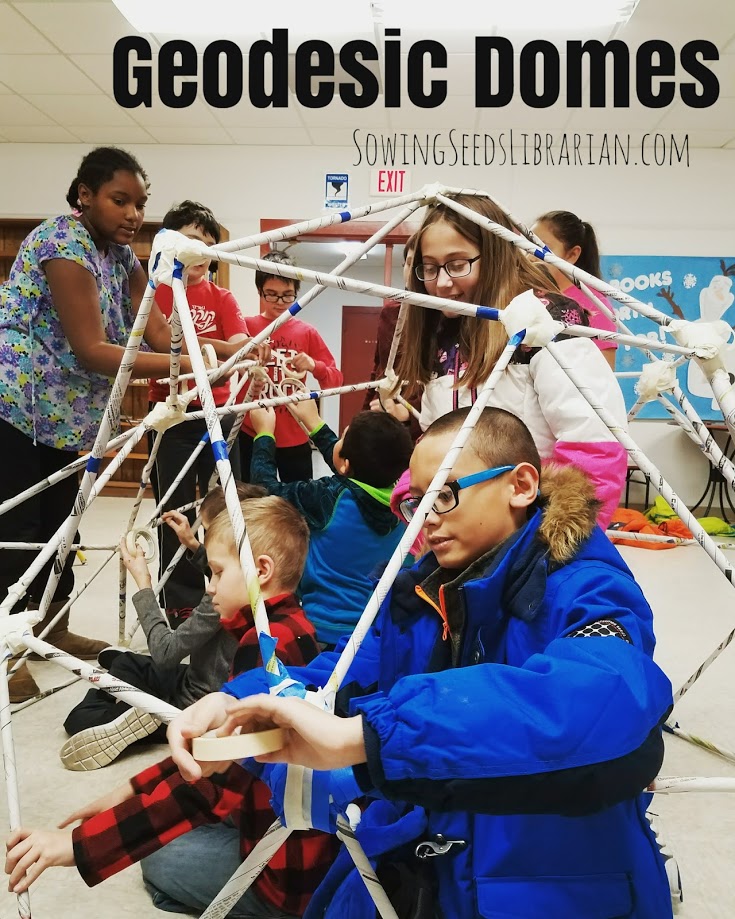
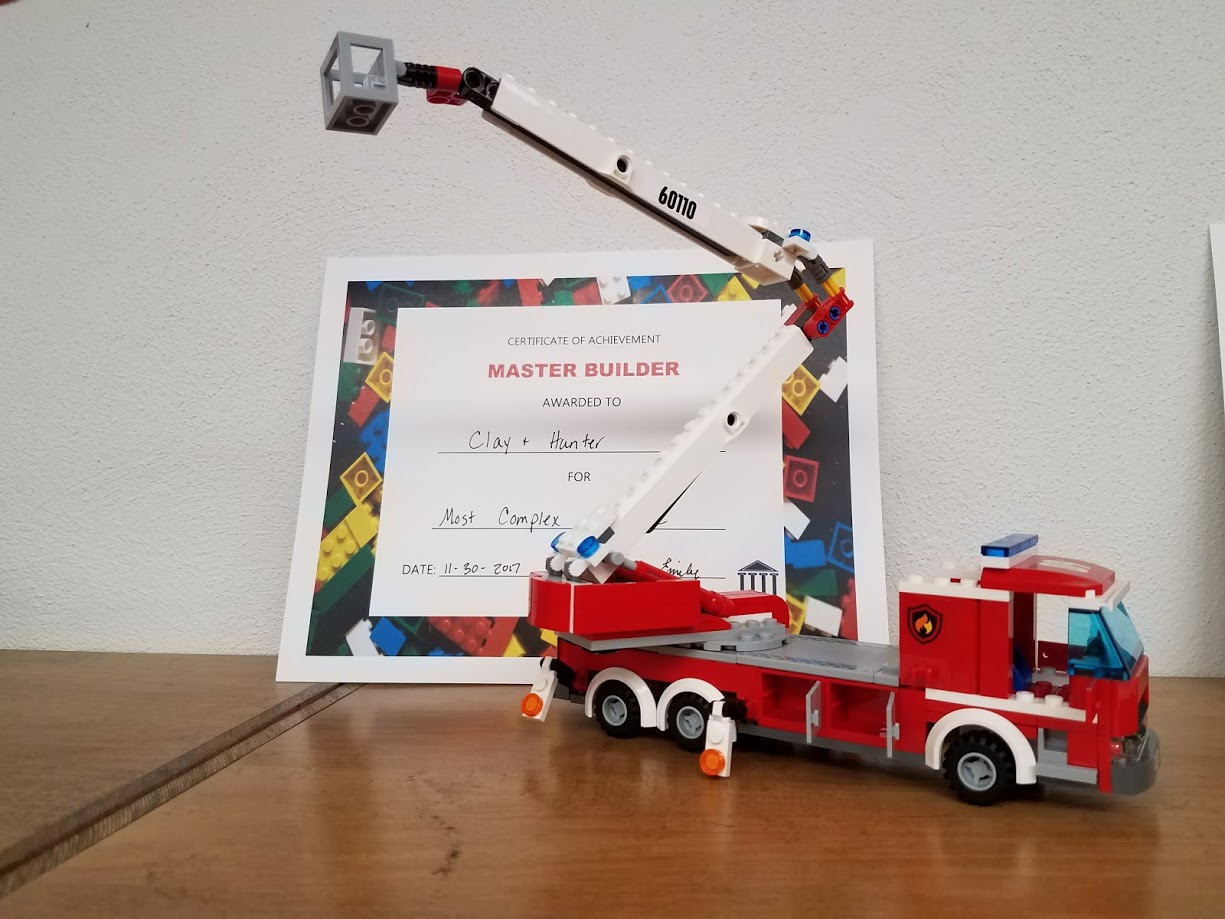
 This program was both difficult, and easy. I usually have Legos out in the children’s library on Tuesdays after school for kids to come in and build with freely. But, for this Lego Expo, I wanted the kids to be able to show off the projects that they work so hard to build. I heard a great idea from a colleague (
This program was both difficult, and easy. I usually have Legos out in the children’s library on Tuesdays after school for kids to come in and build with freely. But, for this Lego Expo, I wanted the kids to be able to show off the projects that they work so hard to build. I heard a great idea from a colleague (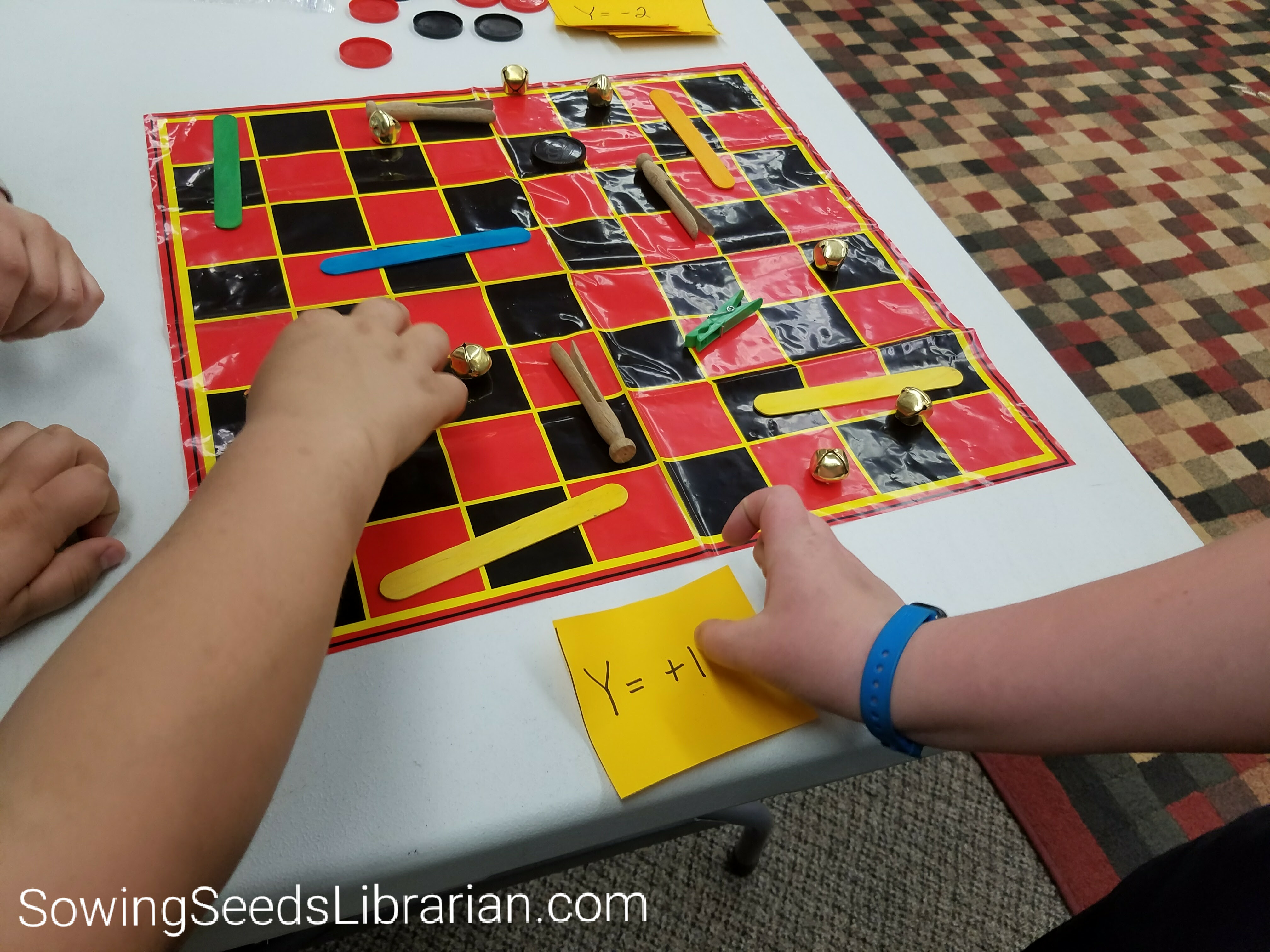
 The skinny: This was a great program, and my students ran with it! They developed complex ideas and games just using their checkerboard and some random objects that I made available to them. Two students turned their checkerboard into the house in the Westing Game book. The goal of their “program” was to help a kid travel through the house without being hurt. I was surprised at how creative they took this, just using the simple instructions I gave them.
The skinny: This was a great program, and my students ran with it! They developed complex ideas and games just using their checkerboard and some random objects that I made available to them. Two students turned their checkerboard into the house in the Westing Game book. The goal of their “program” was to help a kid travel through the house without being hurt. I was surprised at how creative they took this, just using the simple instructions I gave them. How it worked:
How it worked: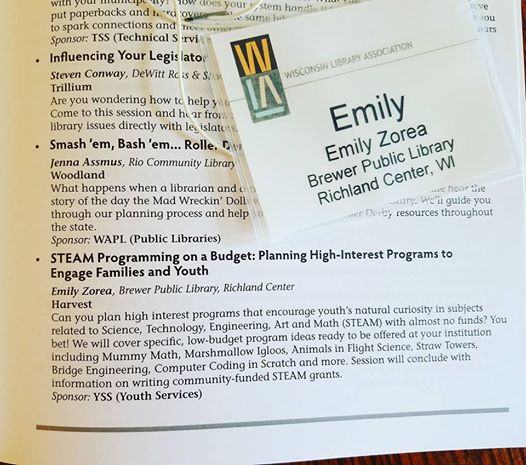

 Today we get to work with puzzles! You only get 20 planks, and they all look the same. How many objects can you create with those 20 planks? A lot. How much fun will you have? Again…a lot!
Today we get to work with puzzles! You only get 20 planks, and they all look the same. How many objects can you create with those 20 planks? A lot. How much fun will you have? Again…a lot! We live in a binary world. Our computers, music, books, magazines, almost every form of media is digital and it all runs on the binary code. But, it is surprising how little many of us understand about the code that influences so much of our lives. For Teen Tech Week in March 2017, I wanted to do a program for tweens on coding and showing them the binary system. But, is binary code easy enough for kids to understand and write? Can we do a coding program without a computer? As we found out, the answers are yes, and yes!
We live in a binary world. Our computers, music, books, magazines, almost every form of media is digital and it all runs on the binary code. But, it is surprising how little many of us understand about the code that influences so much of our lives. For Teen Tech Week in March 2017, I wanted to do a program for tweens on coding and showing them the binary system. But, is binary code easy enough for kids to understand and write? Can we do a coding program without a computer? As we found out, the answers are yes, and yes! Put kids and marbles together and you automatically have a great time planned. Add a few lessons about Push and Pull, and you have an experiment in physics that combines fine motor skills, creative design, an understanding of force, and lots of marbles that went home with happy families. We held this program as a our second Workshop in January of 2017.
Put kids and marbles together and you automatically have a great time planned. Add a few lessons about Push and Pull, and you have an experiment in physics that combines fine motor skills, creative design, an understanding of force, and lots of marbles that went home with happy families. We held this program as a our second Workshop in January of 2017.

 Jennifer Boothroyd. I try to use a book at least for a few moments every Workshop because it shows that literacy and STEM go together in fostering curiosity! I did not read every page of this book. Instead, I prepared some post-it notes and I placed them on pages where I wanted to ask the kids questions. This helped keep the book engaging, and kids and me asking questions about what we were reading.
Jennifer Boothroyd. I try to use a book at least for a few moments every Workshop because it shows that literacy and STEM go together in fostering curiosity! I did not read every page of this book. Instead, I prepared some post-it notes and I placed them on pages where I wanted to ask the kids questions. This helped keep the book engaging, and kids and me asking questions about what we were reading.






 With snow on the ground and Wisconsin suffering from a cold snap, it was the perfect night to talk about how Inuit people build houses with nothing by the natural materials their environment gives them: snow and ice. And, what better way to learn about it than by experimenting with geometric shapes to build igloos of our own…in the comfort of the heated library with marshmallows and toothpicks as our building materials of choice!
With snow on the ground and Wisconsin suffering from a cold snap, it was the perfect night to talk about how Inuit people build houses with nothing by the natural materials their environment gives them: snow and ice. And, what better way to learn about it than by experimenting with geometric shapes to build igloos of our own…in the comfort of the heated library with marshmallows and toothpicks as our building materials of choice! This was the first Kids’ STEM Workshop we offered. We had a great attendance, and it was a wonderful way to kick off our series and let parents and kids know we would be doing this twice a month by offering an incredibly low cost program. And, what kid does not want to build the tallest tower in the room?
This was the first Kids’ STEM Workshop we offered. We had a great attendance, and it was a wonderful way to kick off our series and let parents and kids know we would be doing this twice a month by offering an incredibly low cost program. And, what kid does not want to build the tallest tower in the room?

